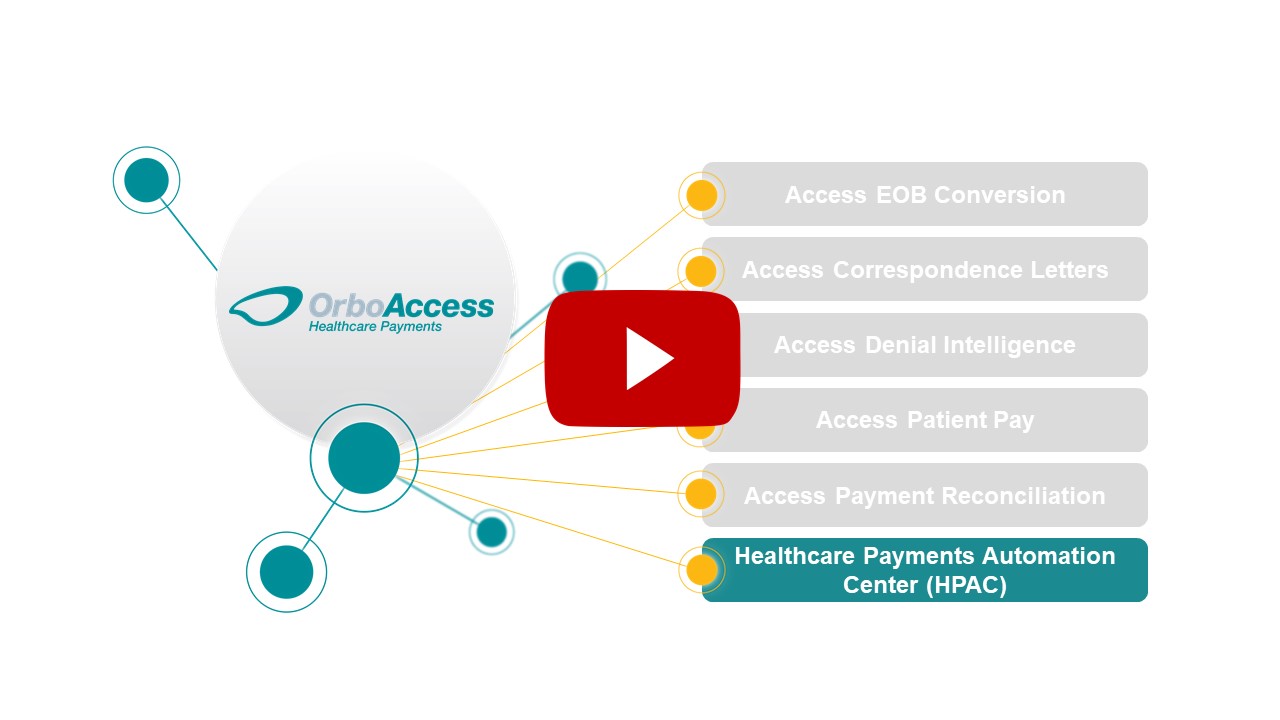Healthcare Payments Automation Center
The Healthcare Payments Automation Center (HPAC) is OrboGraph’s scalable and resilient cloud-based data center which hosts the OrboAccess suite of healthcare payment automation solutions including Access EOB Conversion, Access Correspondence Letters and Access Denial Intelligence.
OrboGraph selected Amazon Web Services (AWS) for cloud deployment due to many considerations including security, accessibility, maintainability, reliability and scalability. As companies around the globe recognize that physical data centers are replaced with cloud-based application deployments, OrboGraph created a competitive differentiator by implementing an enterprise-grade infrastructure around a unique security implementation which adheres and exceeds strict regulatory compliance requirements of Protected Health Information (PHI), the Health Insurance Portability and Accountability Act (HIPAA) and HITECH.
The implementation of HPAC on AWS focuses on six major areas including:
-
Network security and compliance
-
Data security and encryption
-
Access identity management
-
Auditing and data archiving
-
Managing large data sets
-
High availability and disaster recovery

Electronic Content Management
Electronic Content Management (ECM) is defined by AIIM as “the strategies, methods and tools used to capture, manage, store, preserve, and deliver content and documents related to organizational processes.”
HPAC delivers ECM functionality by providing immediate search access to information stored on the system, for daily processing such as cash posting or month end reconciliation. Patient inquiries are available online as part of a long-term storage.
The HPAC platform stores a wide range of data formats for seven+ years, based on the requirements of the HIPAA covered entity. Data formats supported include: EDI, TIFF/JPEG images, and PDF files. Additionally, all transactional data, once imported into the system, is stored as part the system, linking claim data to remittance information. This powerful combination of clinical and revenue cycle data is comprised of the following:
- EDI 837 submitted claims
- EDI 835 electronic remittance advices generated from payers
- Scanned images of EOBs/EOPs
- Scanned images of correspondence letters
- Scanned images of patient payments
- Transactional and claim data extracted from all scanned images
- Virtual EOB/EOPs populated with electronic source information
- Denied claim information

Business Intelligence
The purpose of Business Intelligence (BI) is to support better business decisions. HPAC incorporates a variety of meaningful charts, graphs, tables, illustrations, and reports for business analysis purposes with the goal of easy interpretation of these large volumes of data. Additionally, key performance indicators (KPI) are incorporated into BI.
Uses of BI within HPAC and OrboAccess applications include:
- Operational Dashboard
- Executive Dashboard including EOB and payment types analysis
- Access Denial Intelligence
- Payer analysis
Examples include: the Operational Dashboard enables healthcare providers, system aggregators, lockbox processors or any business partner to analyze volumes processed to address internal reporting and auditing requirements. Selection of data can be done by any filter such as provider, date range, or hierarchy of the processing environment.

Join OrboNation
Access to critical updates, new industry insights, & thought leaders.

